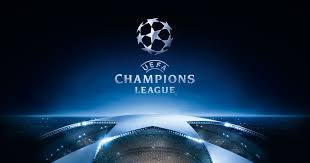Explore the defining tactical duels of the 2025 Champions League knockouts. Discover how formations, managers, and match strategies shaped the league’s biggest clashes.
Tactical Battles That Defined the Champions League Knockouts
The Champions League knockout stages are where managers earn their reputations and tactics become decisive. While world-class talent often grabs headlines, it is the tactical nuances, calculated gambits, and strategic shifts that truly define who advances and who falls.
The 2024/25 Champions League knockout rounds were a masterclass in high-level football tactics. From tight defensive blocks to pressing traps and explosive transitions, each two-legged tie told its own story of chess-like maneuvers between some of the best ACE66 minds in the league.
In this article, we’ll break down the key tactical battles that defined the knockouts — and how these duels shaped the path to the semi-finals and beyond.
1. Real Madrid vs Arsenal: Midfield Control vs Pressing Chaos
First Leg: Arsenal 2-2 Real Madrid
Second Leg: Real Madrid 1-0 Arsenal (Agg: 3-2)
Tactical Summary:
- Madrid’s Setup: 4-3-1-2 diamond to counter Arsenal’s wide threats.
- Arsenal’s Approach: High-pressing 4-3-3, looking to pin Madrid deep.
Key Duel:
Jude Bellingham vs Declan Rice — a fascinating battle of energy, ball progression, and spatial awareness.
Outcome:
Madrid’s midfield depth and Bellingham’s ability to break lines proved too much for Arsenal, who failed to convert key chances under pressure.
2. Manchester City vs Bayern Munich: Pep vs Tuchel, Act II
First Leg: Man City 3-1 Bayern
Second Leg: Bayern 1-1 Man City (Agg: 4-2)
Tactical Summary:
- City: Fluid 3-2-4-1 with inverted fullbacks, possession dominance.
- Bayern: Compact 4-2-3-1 with emphasis on transition and width.
Key Battle:
Kyle Walker vs Alphonso Davies — both tasked with shutting down the flanks while providing width in transitions.
Outcome:
City’s overloads in midfield and Haaland’s physicality broke Bayern’s defensive line repeatedly, neutralizing Tuchel’s transitional game plan.
3. Barcelona vs Inter Milan: Possession vs Defensive Solidity
First Leg: Inter 0-0 Barcelona
Second Leg: Barcelona 2-1 Inter (Agg: 2-1)
Tactical Summary:
- Barça: 4-3-3 focusing on fluid attacking triangles and overloads on the left.
- Inter: 5-3-2 with low block and quick counterattacks through Barella and Thuram.
Key Duel:
Pedri vs Calhanoglu — Pedri’s creativity tested Inter’s defensive shape, while Hakan’s control in counters was crucial.
Outcome:
Barcelona’s patience in breaking down Inter’s disciplined structure was rewarded with a late winner from Lewandowski in the second leg.
4. PSG vs Borussia Dortmund: Firepower vs Compact Press
First Leg: PSG 1-0 Dortmund
Second Leg: Dortmund 2-2 PSG (Agg: 3-2 PSG)
Tactical Summary:
- PSG: 4-2-3-1 with Mbappé floating to exploit spaces behind fullbacks.
- Dortmund: 4-1-4-1 pressing setup, heavy focus on vertical progression.
Key Battle:
Mbappé vs Ryerson — a speed and decision-making duel that tested Dortmund’s right flank repeatedly.
Outcome:
Despite Dortmund’s pressing intensity and home advantage, PSG’s individual brilliance and Mbappé’s movement unlocked the decisive goals.
Tactical Trends Across the Knockouts
| Theme | Description |
|---|---|
| Midfield Control | Clubs like Madrid and City won ties through ball control and rotations. |
| High-Pressing vs Low Block | Arsenal and Dortmund tested opponents with pressing; Inter and Bayern absorbed pressure. |
| Fullback Inversion | Guardiola and Xavi used inverted fullbacks to manipulate shape and overload midfield. |
| Compact Defending | Inter and Bayern relied on 5-man defenses and central congestion. |
| Individual Brilliance | Mbappé, Haaland, and Bellingham turned tactical deadlocks into wins. |
Tactical MVPs of the Knockout Stage
| Player | Club | Role/Impact |
|---|---|---|
| Jude Bellingham | Real Madrid | Engine of midfield; broke pressing lines with vision |
| Bernardo Silva | Manchester City | Drifted into half-spaces; essential in overloads |
| João Cancelo | Barcelona | Hybrid fullback role; stretched and inverted play |
| Joshua Kimmich | Bayern Munich | Controlled tempo from deep and broke opposition lines |
| Ousmane Dembélé | PSG | Created chaos with dribbling in isolated matchups |
Managerial Masterclasses
| Manager | Key Tactical Decision |
|---|---|
| Carlo Ancelotti | Midfield diamond to counter Premier League press |
| Pep Guardiola | 3-box-3 system with Rodri dictating rhythm |
| Xavi Hernández | Positional play with late wing rotations |
| Luis Enrique | Gave Mbappé freedom to roam and exploit half-spaces |
These managers showcased flexibility, preparation, and in-game tactical switches that elevated their teams at crucial moments in the league.
What These Tactical Battles Teach Us
- Flexibility Wins: Static systems were often punished. Adaptive formations gave clubs an edge.
- Midfield Depth Is Crucial: The best teams had midfielders who could play both ways — defend and progress.
- Compact Defense Still Works: Inter showed that with discipline and timing, a low block can nullify even elite attacks.
These trends aren’t just shaping the current tournament—they’re setting the tone for the future of top-level football strategy in Europe’s most competitive league.
Conclusion: A League of Tactical Brilliance
While moments of magic grab the headlines, it’s the silent tactical battles that shape the Champions League. Whether it’s a strategic high press, a perfectly executed defensive shape, or the intelligent use of space, this year’s knockouts have been a playground for football purists and analysts alike.
The UEFA Champions League continues to be the ultimate tactical proving ground, where elite clubs reveal not just their talent, but their philosophy and adaptability.
🔍 Dive Deeper, Support the League
Whether you’re a fan of possession play, gegenpressing, or counter-attacking football, the Champions League knockouts have something for everyone. Celebrate the beautiful complexity of the game by backing your favorite tactical masterminds and moments. Let’s show our love for the league that delivers not just goals, but genius.
